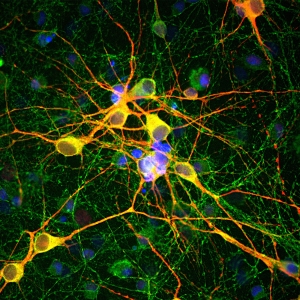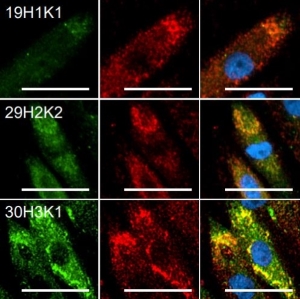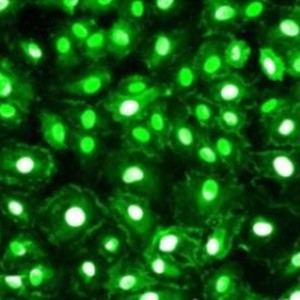Product Details
Product Sizes
| Size | List Price | Price | Cart |
|---|---|---|---|
| 100 ul | $325.00 | Add to Cart |
Aurora A is a member of the Aurora/Ipl1-related kinase family, a family of serine/threonine kinases crucial for cell cycle control. The first Aurora kinase was discovered in Drosophila(1). Mutations of this kinase caused the formation of monopolar spindles surrounded by kinase, and the appearance of this was reminiscent of the Aurora borealis at the poles of the earth. Mammals express three closely related Aurora kinases named Aurora A, Aurora B, and Aurora C. In particular, Aurora A is overexpressed in various types of cancer and considered to play critical roles in tumorigenesis. Overexpression of Aurora A overrides the cell cycle checkpoint, interferes with mitotic exit, and induces transformation in mammalian cells. In contrast, silencing of Aurora A interrupts centrosome separation, spindle assembly and arrests G2-M transition in C. elegans and human cells. Moreover, Aurora A plays an essential role in neuronal migration by modulation of microtubule organization and is required for normal axon formation. |
Images
HeLa cell cultures stained with MO22158 antibody (green). Aurora A localizes in spindle poles and mitotic spindles at late mitosis. Counterstained is our chicken polyclonal antibody against Vimentin, CH22108 (red). Blue is a DNA stain.






